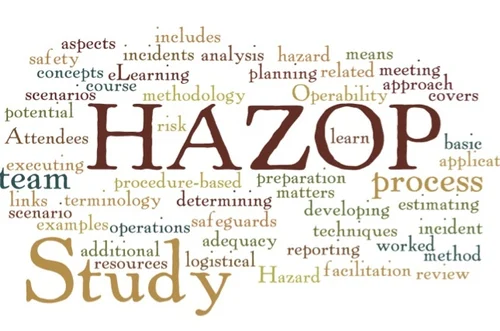Process Safety Management: A Complete Guide to Workplace Safety

Introduction: Understanding Process Safety Management
Process Safety Management (PSM) is a crucial framework for ensuring safe industrial operations, particularly in sectors that handle hazardous chemicals and high-risk processes. It focuses on preventing accidents, controlling risks, and protecting workers, the environment, and assets.
The goal of Process Safety Management is to establish systematic procedures, risk assessments, and safety measures to mitigate hazards in industries such as oil and gas, chemicals, manufacturing, and pharmaceuticals. By implementing robust PSM strategies, companies can prevent catastrophic events, such as chemical explosions, toxic releases, and industrial fires.
In this guide, we will explore the key components, benefits, and best practices of PSM to ensure workplace safety and regulatory compliance.
What Are the Key Elements of Process Safety Management?
A well-structured Process Safety Management system consists of several essential elements that work together to identify, assess, and control hazards. The most recognized model is based on OSHA’s PSM Standard (29 CFR 1910.119), which includes:
1. Process Hazard Analysis (PHA)
PHA is a systematic assessment of potential risks in an industrial process. It helps in identifying hazards, evaluating risks, and recommending safety measures. Techniques like HAZOP Study (Hazard and Operability Study) are commonly used to analyze possible failure scenarios.
2. Mechanical Integrity
Ensuring the maintenance and reliability of equipment such as pressure vessels, piping systems, and control instruments is crucial. Routine inspection, testing, and preventive maintenance can help prevent failures.
3. Operating Procedures
Clear and well-documented procedures guide workers on how to handle normal operations, emergency shutdowns, and startup processes. This reduces human errors and enhances safety.
4. Employee Training and Competency
Proper training ensures that employees understand hazards, follow safety protocols, and respond effectively to emergencies. Regular drills and refresher courses enhance safety awareness.
5. Incident Investigation and Reporting
All incidents, whether major accidents or near-misses, should be thoroughly investigated. Root cause analysis helps in identifying weaknesses and improving safety protocols.
6. Emergency Planning and Response
A well-defined emergency response plan ensures readiness in case of fires, chemical spills, or gas leaks. Collaboration with fire safety professionals and emergency responders is essential.
7. Compliance with Safety Regulations
Adhering to national and international safety laws and industry standards helps organizations maintain credibility and avoid legal consequences.
Why Is Process Safety Management Important in High-Risk Industries?
Industries dealing with hazardous chemicals, flammable materials, or high-pressure systems face significant risks. The absence of proper safety management systems can lead to:
-
Industrial accidents resulting in injuries, fatalities, and environmental damage.
-
Regulatory violations, leading to heavy fines or operational shutdowns.
-
Financial losses due to legal liabilities, asset damage, and production downtime.
-
Reputation damage, affecting customer trust and business continuity.
By implementing a structured PSM system, industries can prevent accidents, ensure compliance, and promote a culture of safety.
How Does Process Safety Management Improve Workplace Safety?
Implementing Process Safety Management helps organizations systematically reduce risks and enhance safety culture in several ways:
✔ Proactive Risk Management – Identifies and mitigates risks before incidents occur.
✔ Enhanced Equipment Reliability – Ensures proper maintenance of machinery and safety systems.
✔ Reduction in Human Errors – Provides training and procedures to minimize mistakes.
✔ Compliance with Safety Regulations – Meets OSHA, ISO 45001, and other industrial safety standards.
✔ Improved Emergency Preparedness – Helps businesses develop effective response plans for potential disasters.
A strong safety culture within an organization leads to better employee morale, increased productivity, and reduced insurance costs.
What Is the Role of Safety Audits in Process Safety Management?
Regular Safety Audit assessments help organizations evaluate the effectiveness of their safety programs. A safety audit examines:
-
Compliance with safety protocols and regulations.
-
Effectiveness of hazard identification and risk control measures.
-
Emergency response preparedness.
-
Employee awareness and training effectiveness.
-
Equipment maintenance and mechanical integrity assessments.
Conducting periodic audits ensures that PSM practices remain up-to-date and continuously improved.
How Does Fire Safety Integrate with Process Safety Management?
One of the most critical aspects of Process Safety Management is ensuring protection against fire hazards. Industrial fires can result from:
-
Flammable chemical leaks.
-
Electrical faults in processing units.
-
Improper storage of hazardous materials.
-
Failure of safety systems such as alarms and sprinklers.
A comprehensive Fire Audit assesses potential fire risks and ensures that organizations have adequate fire prevention, detection, and response measures.
✔ Fire suppression systems – Installation and maintenance of sprinklers, extinguishers, and alarms.
✔ Emergency evacuation plans – Well-defined procedures for employee safety during fire incidents.
✔ Fire drills and employee training – Ensuring workers are prepared to handle fire emergencies.
✔ Compliance with NFPA standards – Meeting fire safety regulations to avoid legal issues.
Proper fire safety planning minimizes risks and safeguards both personnel and assets.
What Is the Role of Safety Consultants in Process Safety Management?
Hiring a Safety Consultant helps businesses implement and maintain effective safety programs. Safety consultants provide expert guidance on:
-
Hazard identification and risk assessment.
-
Regulatory compliance with OSHA and ISO standards.
-
Training and competency development for employees.
-
Incident investigation and prevention strategies.
-
Customized safety solutions for specific industries.
Working with an experienced safety consultant ensures that PSM programs are aligned with best industry practices.
How Can Companies Strengthen Their Process Safety Management Framework?
To improve Process Safety Management, companies should focus on:
-
Regular Risk Assessments – Conduct routine hazard studies, process hazard analysis (PHA), and risk evaluations.
-
Employee Engagement – Encourage a culture where employees actively participate in safety programs.
-
Technology Integration – Utilize automated monitoring systems to track safety compliance.
-
Continuous Improvement – Review past incidents and upgrade safety procedures accordingly.
-
Third-Party Audits and Safety Reviews – Engage independent experts for unbiased safety assessments.
By adopting a holistic approach, industries can ensure a safer workplace and operational sustainability.
Conclusion: Building a Safe and Sustainable Work Environment
A well-executed Process Safety Management system plays a crucial role in preventing workplace hazards, improving compliance, and ensuring business continuity. Implementing safety audits, fire risk assessments, hazard analysis, and emergency preparedness plans helps organizations minimize risks and protect employees.
By integrating structured safety strategies, industries can enhance operational efficiency and maintain a culture of safety for long-term success.







